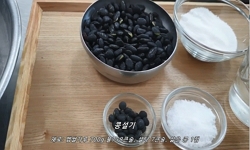<P><B>Background</B></P><P>Grain size is one of the key factors determining yield and quality in rice. A large number of genes are involved in the regulation of grain size parameters such as grain length and grain width. ...
http://chineseinput.net/에서 pinyin(병음)방식으로 중국어를 변환할 수 있습니다.
변환된 중국어를 복사하여 사용하시면 됩니다.
- 中文 을 입력하시려면 zhongwen을 입력하시고 space를누르시면됩니다.
- 北京 을 입력하시려면 beijing을 입력하시고 space를 누르시면 됩니다.


Influence of Multi-Gene Allele Combinations on Grain Size of Rice and Development of a Regression Equation Model to Predict Grain Parameters
한글로보기https://www.riss.kr/link?id=A107483486
- 저자
- 발행기관
- 학술지명
- 권호사항
-
발행연도
2015
-
작성언어
-
- 주제어
-
등재정보
SCOPUS,SCIE
-
자료형태
학술저널
-
수록면
33
- 제공처
-
0
상세조회 -
0
다운로드
부가정보
다국어 초록 (Multilingual Abstract)
<P><B>Background</B></P><P>Grain size is one of the key factors determining yield and quality in rice. A large number of genes are involved in the regulation of grain size parameters such as grain length and grain width. Different alleles of these genes have different impacts on the grain size traits under their control. However, the combined influence of multiple alleles of different genes on grain size remains to be investigated. Six key genes known to influence grain size were investigated in this study: <I>GS3</I>, <I>GS5</I>, <I>GS6</I>, <I>GW2</I>, <I>qSW5</I>/<I>GW5</I>, and <I>GW8</I>/<I>OsSPL16.</I> Allele and grain measurement data were used to develop a regression equation model that can be used for molecular breeding of rice with desired grain characteristics.</P><P><B>Results</B></P><P>A total of 215 diverse rice germplasms, which originated from or were developed in 28 rice-consuming countries, were used in this study. Genotyping analysis demonstrated that a relatively small number of allele combinations were preserved in the diverse population and that these allele combinations were significantly associated with differences in grain size. Furthermore, in several cases, variation at a single gene was sufficient to influence grain size, even when the alleles of other genes remained constant. The data were used to develop a regression equation model for prediction of rice grain size, and this was tested using data from a further 34 germplasms. The model was significantly correlated with three of the four grain size-related traits examined in this study.</P><P><B>Conclusion</B></P><P>Rice grain size is strongly influenced by specific combinations of alleles from six different genes. A regression equation model developed from allele and grain measurement data can be used in rice breeding programs for the development of new rice varieties with desired grain size and shape.</P><P><B>Electronic supplementary material</B></P><P>The online version of this article (doi:10.1186/s12284-015-0066-1) contains supplementary material, which is available to authorized users.</P>
동일학술지(권/호) 다른 논문
-
- Springer US
- de los Reyes, Benildo G
- 2015
- SCOPUS,SCIE
-
- Springer US
- Kwon, Choon-Tak
- 2015
- SCOPUS,SCIE




 ScienceON
ScienceON






